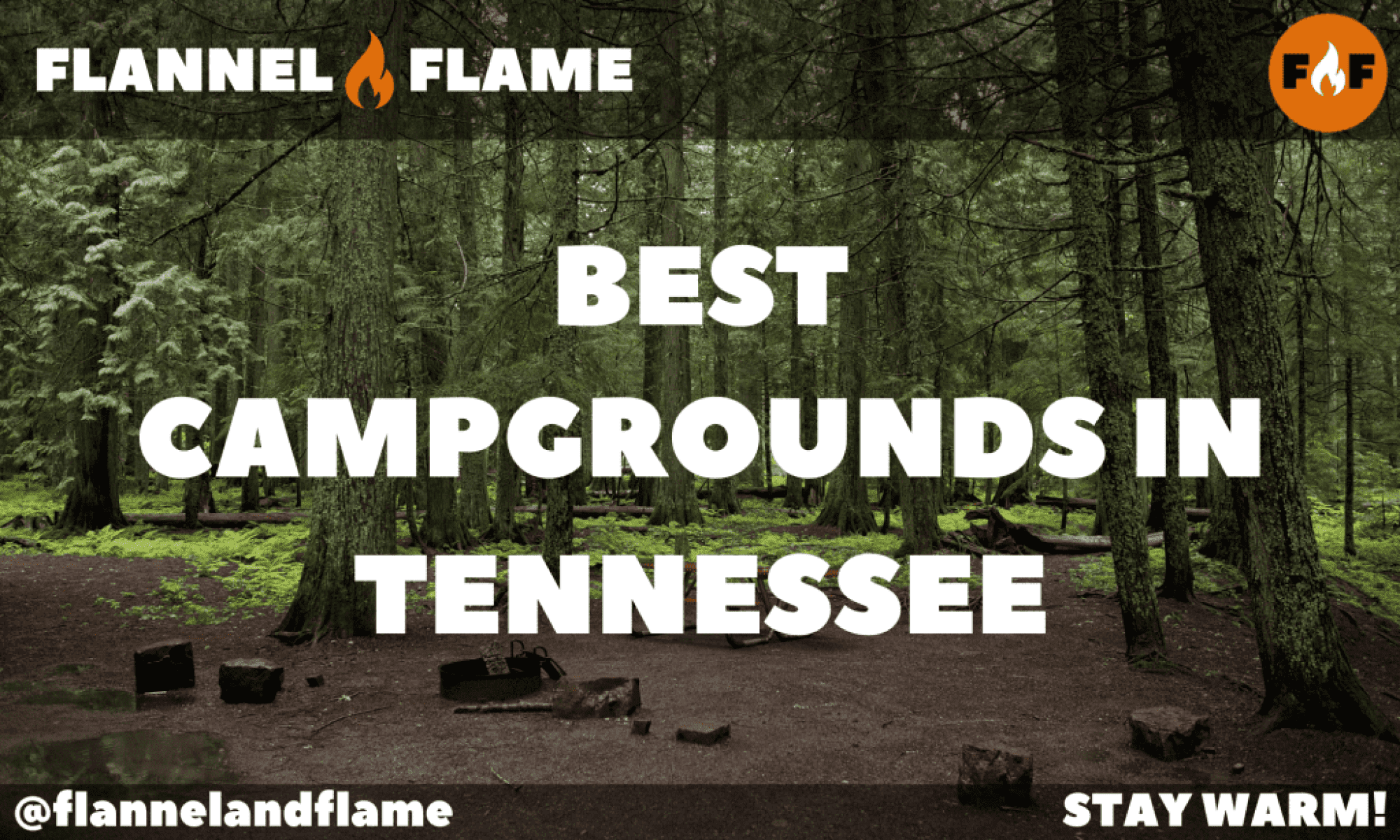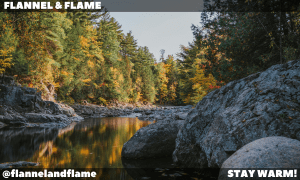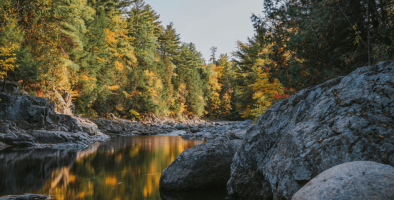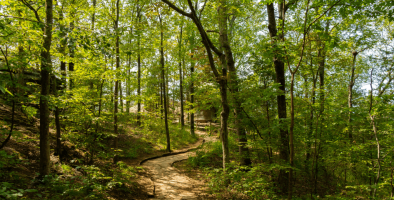Best Campgrounds in Tennessee
Tennessee’s diverse landscape offers some of the most breathtaking camping experiences in the eastern United States. From the misty peaks of the Great Smoky Mountains to the shimmering shores of its many lakes and rivers, the Volunteer State provides outdoor enthusiasts with an incredible array of natural settings to pitch a tent or park an RV. Join us as we explore the best campgrounds across Tennessee where waterfalls cascade through ancient forests, fireflies synchronize their glow on summer evenings, and the night sky reveals its wonders far from city lights.
Great Smoky Mountains National Park
Number of Campsites: 942 across 10 developed campgrounds
Reservation Website: Recreation.gov
Address: 107 Park Headquarters Road, Gatlinburg, TN 37738
There’s something undeniably magical about waking up enveloped in the ethereal mist that gives the Great Smoky Mountains their name. As America’s most visited national park, the Smokies offer not just one exceptional campground but ten distinct camping areas, each with its own character and charm nestled within over half a million acres of protected wilderness.
Cades Cove Campground, perhaps the most popular, sits in a verdant valley where human history and natural splendor intertwine. The surrounding loop road offers frequent wildlife sightings—black bears foraging at forest edges, white-tailed deer grazing in mountain meadows, and wild turkeys strutting proudly across open fields. Morning fog transforms the landscape into something from a dream, with historic cabins and barns emerging from the mist like apparitions from the past.
For those seeking higher elevations, Elkmont Campground provides a dramatically different experience. Situated alongside the tumbling waters of Little River and its tributary streams, this former logging town turned campground is surrounded by old-growth forest where massive hemlocks and tulip poplars create a cathedral-like canopy overhead. In early June, Elkmont becomes the epicenter of a remarkable natural phenomenon—synchronous fireflies flash in perfect unison, turning the forest into a living light show that draws visitors from around the world.
Smokemont Campground in the North Carolina section offers sites along Bradley Fork Creek, where the soothing sound of rushing water accompanies every moment of your stay. Towering trees create dappled light across the campground during the day, while their silhouettes stand stark against the star-filled sky after dark.
Throughout all Smokies campgrounds, the sensory experience is rich and immersive—the earthy scent of rich mountain soil, the cool touch of mountain air that retains its crispness even in summer, the melodic calls of wood thrushes echoing through the forest at dawn and dusk. Trails radiate from most campgrounds, inviting exploration of thundering waterfalls, panoramic vistas, and wildflower meadows that burst with color in spring and early summer.
As night falls across the mountains, temperatures drop pleasantly, creating perfect conditions for gathering around a campfire beneath a canopy of stars rarely seen in more developed areas. This is camping as it should be—immersed in one of America’s most beloved natural landscapes, where every morning brings new discoveries and connections to the ancient mountains.
Fall Creek Falls State Park
Number of Campsites: 222 standard sites, plus 30 backcountry sites and 16 cabins
Reservation Website: Tennessee State Parks Reservation System
Address: 2009 Village Camp Rd, Spencer, TN 38585
Home to the highest waterfall east of the Mississippi River, Fall Creek Falls State Park encompasses over 26,000 acres of gorges, cascades, streams, and virgin hardwood forest on the eastern edge of the Cumberland Plateau. The camping experience here centers around these remarkable water features, with the distant roar of the 256-foot Fall Creek Falls often audible as a constant, soothing backdrop.
The main campground spreads across gently rolling terrain, with campsites nestled among mature hardwood forest. Oak, hickory, maple, and beech trees create a dense canopy that provides abundant shade during Tennessee’s warm months. In autumn, this same canopy transforms into a spectacular display of color, with brilliant reds, oranges, and golds creating a fiery ceiling above the campground.
Morning light filters through the trees in golden shafts, gradually illuminating the forest floor where mist often lingers among the tree trunks. The air carries the clean, fresh scent of the surrounding forest mixed with the distinctive mineral fragrance from the many limestone formations throughout the park.
While the famous waterfall is the park’s centerpiece, several smaller cascades can be found throughout the area, some within easy walking distance of the campground. These provide perfect spots for afternoon exploration or cooling off during summer heat. The 345-acre Fall Creek Falls Lake sits adjacent to part of the campground, offering fishing, swimming, and paddling opportunities just steps from many campsites.
Hiking trails lead from the campground to dramatic overlooks above gorges where ancient forests cling to steep slopes—forests that represent some of the last old-growth timber on the Cumberland Plateau. The Woodland Trail, accessible directly from the campground, showcases massive tulip poplars and hemlocks that have stood for centuries.
As evening approaches, the forest canopy frames patches of sky where stars begin to appear. The cooler plateau air creates comfortable sleeping conditions even in mid-summer. The natural symphony of evening in the forest takes over—barred owls calling “who-cooks-for-you,” tree frogs singing in chorus, and the distant, continuous flow of the park’s namesake falls providing a soothing soundtrack throughout the night.
Roan Mountain State Park
Number of Campsites: 107 standard sites, 2 group sites, plus 20 cabins
Reservation Website: Tennessee State Parks Reservation System
Address: 1015 Highway 143, Roan Mountain, TN 37687
Nestled at the base of the magnificent Roan Mountain, this campground offers a true mountain retreat experience with the added bonus of accessibility. Situated at 2,000 feet elevation, campers enjoy cooler temperatures even in the height of summer, making this an ideal escape from the heat of Tennessee’s lower elevations.
What makes Roan Mountain State Park truly special is its proximity to one of the crown jewels of the Appalachian Trail—the Roan Mountain Balds. These treeless summits, covered in native grasses and—for a magical two weeks in June—spectacular rhododendron blooms, create some of the most breathtaking mountain vistas in the eastern United States.
The campground itself sits along the rushing Doe River, whose crystal-clear waters tumble over moss-covered rocks through the center of the park. Many campsites back directly to the river, offering the perfect natural soundtrack for sleeping and the opportunity to wade or fish just steps from your tent. The surrounding forest consists primarily of hemlock and hardwood trees that create deep shade during summer days and shelter for abundant wildlife.
Morning at Roan Mountain often begins with mist rising from the river and clinging to the mountainsides, gradually burning off as sunlight filters through the trees. The air here carries the unmistakable freshness of high elevations, mixed with the sweet scent of balsam and the earthy fragrance of the forest floor.
Hiking trails leave directly from the campground, including paths that follow the river through rhododendron tunnels and hardwood forest. More ambitious hikers can access the Appalachian Trail and climb to the famous Roan Balds, where 360-degree views encompass five states on clear days.
Perhaps most memorable are the seasonal displays that transform the landscape—spring brings thousands of wildflowers to the forest floor, summer offers the world-famous rhododendron gardens at peak bloom, fall creates a spectacular color show as the hardwood forest transforms, and winter occasionally blankets the area in snow, creating a serene mountain wonderland.
As night falls, temperatures drop noticeably, creating perfect conditions for campfires and stargazing. The park’s relatively remote location means minimal light pollution, allowing the stars to shine with remarkable clarity through gaps in the forest canopy.
Big Ridge State Park
Number of Campsites: 50 standard sites, plus 4 backcountry sites
Reservation Website: Tennessee State Parks Reservation System
Address: 1674 Big Ridge Road, Maynardville, TN 37807
Tucked away in the ridge and valley region of East Tennessee, Big Ridge State Park offers a more intimate camping experience centered around the peaceful shores of Big Ridge Lake. This heavily forested 3,687-acre park combines natural beauty with rich cultural history, creating a multifaceted destination that rewards curious campers.
The campground stretches along a wooded ridge above the lake, with sites nestled among mature hardwood trees that provide ample shade. Oak, hickory, maple, and poplar create a diverse canopy that hosts an impressive variety of songbirds—their morning chorus serves as nature’s alarm clock, beginning just before sunrise and reaching full symphony as the first light filters through the leaves.
A short walk from most campsites leads to the shores of the 49-acre lake, where morning mist often hovers over the water’s surface until burned away by the rising sun. The reflection of forested ridges on the still morning water creates mirror images that seem to double the beauty of the landscape. Fishing piers extend into deeper water, while a designated swimming area offers refreshing relief during Tennessee’s warmer months.
What sets Big Ridge apart is the sense of exploration it offers within a relatively compact area. Over 15 miles of hiking trails wind through the park, leading to hidden historical sites including an early 19th-century gristmill, the remnants of an Appalachian community, and a haunting cemetery with graves dating back to the 1800s. These silent witnesses to the past create a deeper connection to the land and its human history.
Wildlife abounds throughout the park—white-tailed deer frequently browse near campground edges in early morning and evening hours, while fox and raccoon tracks can often be spotted along muddy trail sections. Lucky campers might glimpse river otters playing in the lake or hear the distinctive call of pileated woodpeckers working on trees nearby.
As evening approaches, the surrounding ridges create a natural bowl that holds the last light of day, extending golden hour and creating dramatic silhouettes against the darkening sky. After sunset, the lake becomes a mirror for the moon and stars, doubling their impact in the night sky. The campground’s thoughtful layout provides enough space between sites to maintain a sense of privacy while still fostering the community aspect of camping.
Montgomery Bell State Park
Number of Campsites: 47 standard sites, plus lodge and cabins
Reservation Website: Tennessee State Parks Reservation System
Address: 1020 Jackson Hill Rd, Burns, TN 37029
Less than an hour from Nashville, Montgomery Bell State Park offers an accessible escape into nature without sacrificing scenic beauty or recreational opportunities. This 3,782-acre park in Middle Tennessee’s Highland Rim region features rolling hills, mature hardwood forests, and three clear lakes nestled amongst its wooded landscape.
The campground occupies a scenic area adjacent to one of the park’s lakes, with sites thoughtfully arranged to maximize privacy while still providing amenities that ensure comfort. Tall oaks, hickories, and other hardwoods create a leafy canopy overhead, dappling campsites with ever-changing patterns of light and shadow throughout the day. In autumn, these same trees create a spectacular color display, transforming the campground into a kaleidoscope of russet, gold, and crimson.
Morning often begins with the gentle calls of songbirds—wood thrushes, cardinals, and chickadees announce the new day as mist rises from the nearby lake. The air carries the clean scent of the surrounding forest, with subtle seasonal changes from the sweet fragrance of spring blossoms to the earthy aroma of autumn leaves.
Three lakes within the park provide focal points for recreation—fishing for bass, bream, and catfish; paddling quiet coves in a kayak or canoe; or simply sitting on the shore watching great blue herons stalk the shallows. A network of well-maintained hiking trails leaves directly from the campground area, leading through diverse landscapes including hardwood forests, alongside bubbling streams, and past historic features that tell stories of the land’s past.
Perhaps most interesting is the park’s unique history—it was once the site of one of the earliest iron industries in Middle Tennessee. Remnants of this past can be discovered along trails, creating a fascinating blend of natural beauty and historical interest. The park is named for Montgomery Bell, an iron master who established the Pattison Forge in 1804, which once operated within what are now park boundaries.
Evening in the campground brings a peaceful transition as day visitors depart and campers settle in for the night. Fireflies often make appearances during summer months, their blinking lights adding magic to the growing darkness beneath the trees. With Nashville’s urban glow blocked by surrounding hills, stars emerge in impressive numbers, creating opportunities for stargazing rarely found so close to a major city.
Natchez Trace State Park
Number of Campsites: 208 standard sites across multiple campgrounds, plus cabins and lodge
Reservation Website: Tennessee State Parks Reservation System
Address: 24845 Natchez Trace Rd, Wildersville, TN 38388
Spanning more than 48,000 acres of forests, lakes, and scenic landscapes, Natchez Trace State Park offers a diverse camping experience in the heart of West Tennessee. This expansive park contains not just one but four distinct camping areas, each with its own character and appeal, united by the region’s rolling terrain and mixed hardwood-pine forests.
Pin Oak Lake Campground, the largest camping area, stretches along the shoreline of its namesake 58-acre lake. Many sites offer direct water views, allowing campers to watch the changing colors of sunset reflected on the water’s surface without leaving their campsite. Tall pines and hardwoods create dappled shade throughout the campground, their straight trunks forming natural columns that frame views of the lake.
Wrangler’s Camp caters to equestrian campers, with sites designed to accommodate horses alongside human visitors. This unique campground connects directly to more than 250 miles of riding trails that wind through the surrounding forest, creating one of the premier horse camping destinations in the Southeast.
Throughout all campgrounds, the landscape reflects the transition zone between the Mississippi River valley and the Tennessee highlands, creating a rich diversity of plant and animal life. Wild turkeys frequently strut through campground clearings in early morning hours, while barred owls call from deeper in the forest as dusk approaches.
Mornings begin with fog often clinging to the lakes and low-lying areas, gradually burning off as sunlight filters through the tree canopy. The air carries the mingled scents of pine resin and hardwood leaves, changing subtly with the seasons from the fresh green fragrance of spring to the earthy musk of autumn.
The park’s four lakes—Pin Oak, Maple Creek, Cub, and Brown’s Creek—provide focal points for recreation, with fishing for bass, bream, and catfish being particularly popular. Swimming beaches offer relief during the warmest months, while numerous trails lead from the campgrounds into the surrounding forest, where remnants of the area’s interesting history can be discovered.
The park takes its name from the historic Natchez Trace, an ancient travel corridor that connected southern Mississippi to Nashville, Tennessee. Portions of the Old Trace ran through what is now the park, adding historical significance to the natural beauty surrounding campers.
As evening approaches, the setting sun filters horizontally through the trees, casting long shadows and illuminating the forest in golden light before darkness settles. Frogs and insects begin their nightly chorus, creating a soothing natural soundtrack for gathered campfires throughout the campgrounds.
Frozen Head State Park
Number of Campsites: 20 standard sites, plus 10 backcountry sites
Reservation Website: Tennessee State Parks Reservation System
Address: 964 Flat Fork Rd, Wartburg, TN 37887
For those seeking a more remote camping experience with access to pristine wilderness, Frozen Head State Park offers an unmatched opportunity to connect with one of Tennessee’s most spectacular mountain environments. Nestled in the Cumberland Mountains of the eastern portion of the state, this 24,000-acre natural area contains some of the tallest peaks in Tennessee outside of the Great Smoky Mountains.
The modest-sized main campground sits in a stunning valley at the base of 3,324-foot Frozen Head Mountain, surrounded by old-growth hardwood forest and bordered by the clear, rushing waters of Flat Fork Creek. With just 20 sites, this campground maintains an intimate, uncrowded atmosphere even during peak seasons.
Towering tulip poplars, oaks, maples, and hemlocks create deep shade throughout the campground, with some trees reaching heights of over 100 feet—silent witnesses to the passage of time in these ancient mountains. Their massive trunks and expansive canopy create a cathedral-like atmosphere that instills a sense of reverence for the natural world.
Morning begins with birdsong echoing through the valley—the flute-like notes of wood thrushes, the cheerful calls of Carolina wrens, and the drumming of pileated woodpeckers form a natural symphony that builds with the rising sun. Mist frequently fills the valley floor in early hours, creating an ethereal landscape until burned away by strengthening sunlight.
What makes Frozen Head truly special is its pristine watershed. Over 20 crystal-clear mountain streams cascade down from the surrounding peaks, creating numerous waterfalls and tranquil pools throughout the park. Many of these can be reached via the 80+ miles of hiking trails that radiate from near the campground, allowing for days of exploration without covering the same ground twice.
Spring brings an extraordinary wildflower display, with over 130 species blooming in succession from March through May. The forest floor transforms into a living carpet of trillium, spring beauty, bloodroot, and countless other blossoms that showcase the incredible biodiversity of these mountains.
As evening approaches, the surrounding peaks catch the last light of day, sometimes appearing to glow while the valley floor falls into shadow—a visual reminder of how the park got its name, as the mountaintops often appear frozen with frost or ice while lower elevations remain clear.
Night in the campground brings a stillness broken only by the constant murmur of the creek and occasional calls of owls from the forest. With minimal light pollution, the stars appear in staggering numbers overhead, visible through gaps in the canopy or from clearings near the campground.
Pickwick Landing State Park
Number of Campsites: 48 standard sites, plus inn and cabins
Reservation Website: Tennessee State Parks Reservation System
Address: 116 State Park Ln, Counce, TN 38326
In the southwestern corner of Tennessee, where the state meets Mississippi and Alabama, Pickwick Landing State Park offers a camping experience centered around one of the most scenic sections of the Tennessee River. This 1,416-acre park combines water-based recreation with beautiful forested areas to create a perfect destination for those who love spending time on and near the water.
The campground occupies a wooded peninsula that extends into Pickwick Lake, created by the damming of the Tennessee River. Most sites nestle among mature trees that provide welcome shade during warm months, while strategically placed clearings offer glimpses of the sparkling water beyond. The surrounding forest consists primarily of oak, hickory, and pine, creating a diverse canopy that supports abundant birdlife.
Morning at Pickwick often begins with mist hovering over the lake’s surface, gradually dispersing as the sun rises higher. Early risers might spot great blue herons stalking the shallows or osprey diving for fish in deeper water. The gentle lapping of water against the shoreline provides a constant, soothing soundtrack throughout the campground.
What distinguishes Pickwick from many other lakeside campgrounds is the impressive scale of the water itself. Created by the 38-foot-high Pickwick Landing Dam, the lake stretches for miles, creating a playground for boating, fishing, and water sports. The Tennessee River’s mighty flow ensures the lake remains vibrant and dynamic rather than stagnant.
The park’s unique location at the meeting point of three states means campers can easily explore different regions from this central basecamp. The nearby Shiloh National Military Park offers historical interest, while numerous small coves and inlets throughout Pickwick Lake provide endless opportunities for exploration by kayak or canoe.
Fishing enthusiasts particularly appreciate Pickwick for its renowned smallmouth bass population, though catfish, crappie, and other species also thrive in these waters. The dam’s tailwater area creates one of Tennessee’s most productive fishing spots, accessible from shore within walking distance of the campground.
As day transitions to evening, the western sky often puts on a spectacular show, with sunset colors reflecting across the expansive water surface, doubling their visual impact. The park’s open areas provide perfect vantage points for watching this daily spectacle before returning to the comfort of your campsite for the evening.
After dark, the surrounding forest provides a buffer against light pollution, allowing for impressive stargazing from lakeshore viewpoints. The gentle sounds of water and nocturnal forest creatures create a peaceful backdrop for falling asleep after a day of lake-based adventures.
Final Thoughts About Camping in Tennessee
Tennessee’s remarkable geographical diversity is perfectly showcased through its outstanding campgrounds. From the misty heights of the Great Smoky Mountains to the thundering waterfalls of the Cumberland Plateau, from the clear mountain streams of the eastern highlands to the mighty Tennessee River in the west, each camping destination offers its own unique connection to the natural world.
What makes Tennessee camping truly special is its accessibility throughout much of the year. The state’s moderate climate, particularly in spring and fall, creates extended camping seasons when conditions are often perfect—warm days for exploration followed by cool nights for comfortable sleeping. Even winter camping can be rewarding, particularly in the western portions of the state where temperatures remain milder.
The state’s rich cultural and natural history adds depth to every camping experience. From ancient Cherokee trails and pioneer settlements to the diverse ecosystems that support thousands of plant and animal species, Tennessee’s outdoor spaces tell fascinating stories for those willing to listen.
Whether you’re seeking adventure, relaxation, or a deeper connection with nature, Tennessee’s campgrounds provide the perfect basecamp for exploration. From mountain summits to riverside retreats, from rhododendron tunnels to old-growth forests, the diverse landscapes of the Volunteer State await your discovery.
Pack your tent, load up your RV, or reserve a cabin—Tennessee’s natural treasures are ready to provide the backdrop for memories that will last a lifetime.
Other States to Explore
More from Flannel & Flame…
- Mexican Bean SaladBold, zesty, and bursting with color, this Mexican Bean Salad is a side dish that brings the flavor anywhere you roam. A hearty mix of black, kidney, and cannellini beans comes together with crisp bell peppers, sweet corn, and red onion, all tossed in a citrusy vinaigrette loaded with fresh cilantro and just the right… Read more: Mexican Bean Salad
- Cheesy PotatoesGolden, gooey, and loaded with flavor, these Dutch Oven Cheesy Potatoes are a campfire favorite that never disappoints. Tender hash browns are layered with melted cheese, savory seasonings, and just the right amount of smoky goodness from the fire. Baked slow and steady in a Dutch oven, this comforting side dish is perfect alongside grilled… Read more: Cheesy Potatoes
- Alternatives to S’Mores: Sweet Twists and Campfire Treats You’ll CraveThere’s something undeniably magical about a gooey s’more melting between your fingers under a starlit sky. The way the chocolate gets just soft enough, the marshmallow smolders to a golden hue (or charred to a crisp, if that’s your thing), and the graham crackers give that perfect crunch — it’s the taste of summer, nostalgia,… Read more: Alternatives to S’Mores: Sweet Twists and Campfire Treats You’ll Crave
- Best Hiking in New YorkWilderness, waterfalls, and wonder from the Catskills to the Adirondacks New York might be synonymous with skyscrapers, yellow cabs, and a certain iconic skyline—but trust me, beyond the hustle of the city, the Empire State hides some of the most jaw-dropping trails in the Northeast. We’re talking misty mountaintops, mossy forests, gorges carved by ancient… Read more: Best Hiking in New York








